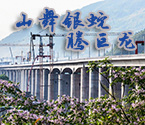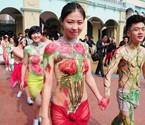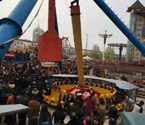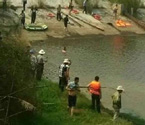


2023-2024年,蒋晟远赴巴基斯坦考察,拜访古犍陀罗遗址,试图亲自感知这个佛像最初诞生地本真的样貌。
战争令文明以毁灭的方式重生,历经贵霜帝国犍陀罗文明的鼎盛时期,古代印度、希腊、波斯、草原等文明的攻城略地,以及现代化对地方美学、历史的冲击。。。2000年的岁月被清晰地刻印在这片土地。
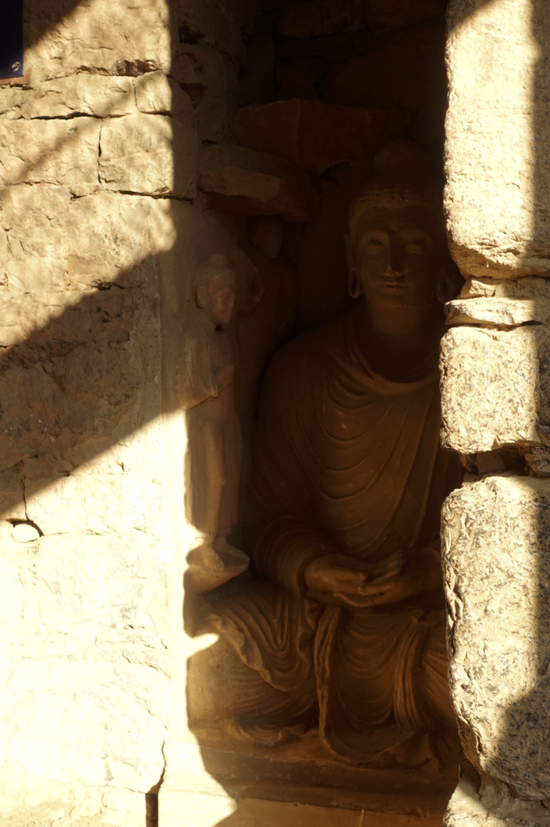
[Jaulian Monastery & Stupa中的佛陀禅定像及其胁侍菩萨 摄影:蒋晟]
巴基斯坦途中的见闻和感受,被蒋晟随身记录和整理下来,塔克西拉的“干燥”“烈日”,穿越悠远的千年时光抵达他耳畔的梵音,古犍陀罗时期建筑和工艺美术的盛景,公元前1世纪的遗迹和现代文明并置的魔幻与冲突。。。尽数在他的记述中浮现。蒋晟如此定义‘物感’:当手触摸到材料,才能‘雕’与‘塑’,物体进而显露出它的‘真实’。但我们想,不仅是手掌的纹路能够帮他探寻物象之下的本真,一切时空的隔阂也都在他全然的接纳和觉知中消弭。所以他从坍倒的残垣中洞悉彼时的建筑者是如何创造出一处修行的圣地,明晓塑像各异的面容之下是怎样亘久的肃穆与沉静,甚至从向西的远望中与古时的经行者看见同一片日落、同一片风景。
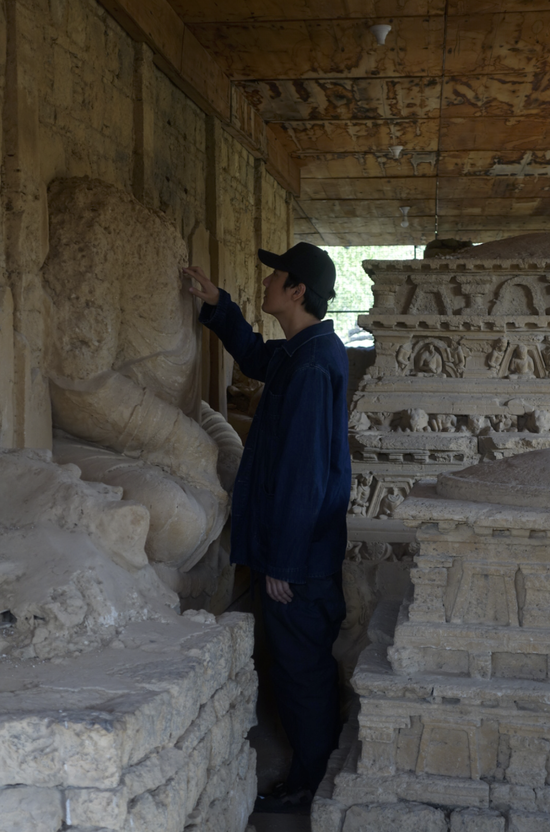
[ 蒋晟在Jaulian Monastery & Stupa 摄影:蒋家班 ]
置身万里之遥的巴基斯坦景象前,牵引出蒋晟在厦门时的一段记忆。为躲避小贩的搅扰他躲进一棵巨大的榕树,这颗榕树与旁边一棵硕大的菩提树接壤比肩,生长为坚实的样貌。这让他想起从小生活的厦门大学校园,校内的榕树就是他们幼时的游乐场。时隔七年,蒋晟和蒋家班的足迹经转各地,拉萨、台北。。。甚至高山草原,再次回到厦门举办个展。就像蒋晟所说,“也许若干年后,还会再有这样的一次回溯,但现在我觉得需要有一个休止点,然后继续往前走。”
‘蒋晟:樂将至’作为蒋家班成立以来规模最集中的回顾展,是蒋家班成立十余年后的一次回溯之举,也肇始于蒋晟本次前往古犍陀罗区域的溯源之旅,此次考察为蒋晟串联起一条创作的完整线索,为他重塑造像和精神传达之间新的天平。展览分为缘起、造像、符号、媒介四个章节,将展出十余尊雕塑、十余件器皿、平面浮雕等全新作品,并呈现蒋家班造像工艺研究的原始材料与文本档案。
“浩瀚时空的变幻使得任何一个时代的造像形成必然,在展览中,蒋晟通过溯源佛像诞生之初的古犍陀罗文化,试图为这一必然找到当下的注脚。”
From 2023 to 2024, Jiang Sheng traveled to Pakistan, visiting ancient Gandharan sites to investigate the birthplace of such unique Buddhist art。
War has revigorated civilizations through destruction, through the heyday of the Gandhara civilization of the Kushan Empire, the ancient civilizations of India, Greece, Persia, and the Steppes waged wars and conquered lands, and the impact of modernization on local aesthetics and history 。。。 2000 years of age are clearly imprinted on this land。
What he saw and felt in Pakistan were recorded and collated by Jiang Sheng, the “dryness” and “scorching sun” of Taxila, the buddhist sound that reached his ears through the long millennium, the grandeur of architecture and sculpture art in ancient Gandhara, the conflict between the remains of ancient Gandhara of the 1st century BC and the modern civilization。。。 all appeared in his records。 Jiang Sheng defines “the sense of object” as follows: “Only when the hand touches the material can one ‘carve’ and ‘sculpt’, revealing the ‘genuine’ side of the object。” But we think that not only the tactile sensation of palms can help him explore the true nature under the objects, but also his acceptance and awareness will dissolve all the barriers of time and space。 Therefore, from the collapsed ruins, he knew how the builders created a sacred place for spiritual practice, and the permanent solemnity and calm under the different faces of the statues, even through the distant view to the west, he saw the same sunset and the same scenery with the ancient pilgrims。
Being in front of the scene of Pakistan, which is thousands of miles away from home, awaken a memory of Jiang Sheng in Xiamen。 In order to avoid the hustle of hawkers, he hid in a huge banyan tree, which grew into a solid form and bordered a large bodhi tree, reminding him of the Xiamen University where he grew up, and the banyan tree there was his childhood playground。 After seven years, Jiang Sheng and the Jiangs have traveled to many places, such as Lhasa, Taipei, Suzhou。。。 even mountains and grassland, and now returned to Xiamen again to hold this solo exhibition。 As Jiang Sheng said, “Maybe in a few years, there will be another retrospective, but right now I feel that I need a review and reorganization, and then continue to move forward。”
As the most concentrated retrospective exhibition since the establishment of The JIANGS, “THE JIANGS PRESENTS—LANDSCAPE: Excavation and Creation” originates from an investigation on its more than ten years’ art-making, and also from Jiang Sheng’s journey to retrace his steps to the birthplace and enclave of Buddhist art—the ancient Gandhara region。 This expedition provides a complete clue for Jiang Sheng‘s creation, and reshaped a new balance between his statue and spiritual communication。 The exhibition is divided into four connecting chapters: Excavation, Creation, Symbols, and Medium, altogether concocting more than ten sculptures, over ten vessels, low reliefs, and other new works, and presenting the original materials and textual research archives on image-making techniques conducted by The JIANGS。
“The vast changes in time and space always made image-making of a specific era a project of inevitability。 In the exhibition, Jiang Sheng retraces his steps to ancient Gandhara culture where the Buddha statues were first made, and to complete his task of elucidating its inevitability。”


溯源
Excavation
蒋晟说:“我曾遇到过一副未曾感受过的佛像面容,他在巴基斯坦的白沙瓦博物馆。不像常见的犍陀罗佛像明显的希腊化的风格,他的面容反而更趋近于一幅东方人的面孔。”
迄今为止,犍陀罗盆地文明陆续经历伊斯兰教、锡克教的宗教影响,以及现代化对于美学、历史的冲击,在多种迭代、杂糅之下,从中浮现的图景呈现出一个原生的面貌。这是一个少有人踏足的领域,蒋晟为此感到兴奋。
一个地域的艺术史并非凭空产生,它是依托地缘,以社会史、经济史等客观元素为经纬,呈现出一种特定时代的艺术现象,这种社会现象是一个必然的生态产物。所以厘清时空关系、回溯社会与思想的流变,是有助于更大限度地趋近艺术和艺术史的本来面目。浩瀚时空的参差使任何一个时代的造像形态形成必然,而蒋晟所需要做到的,就是为这一必然找到注脚。

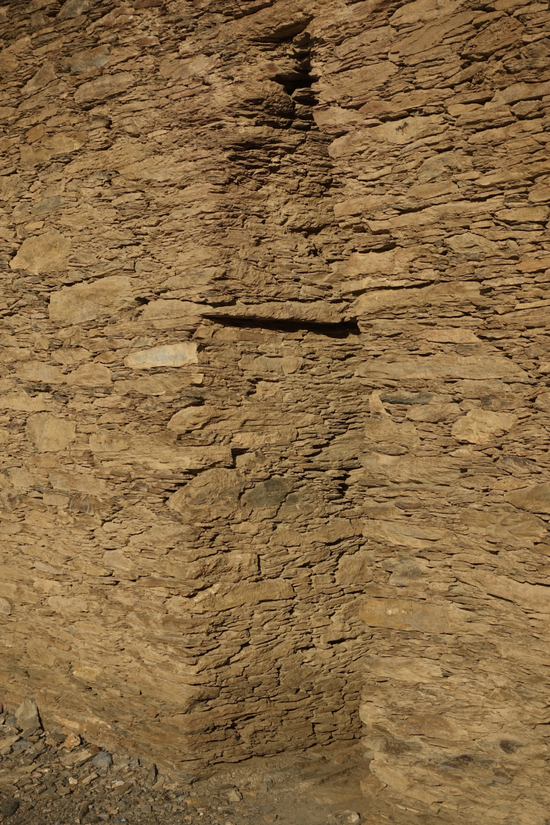


Jiang Sheng once remarked, “I encountered a Buddha statue with an unfamiliar face at the Peshawar Museum in Pakistan。 Unlike those typical Gandharan statues of Hellenistic style, his face has more of Oriental flair。”
The Gandhara Basin civilization has undergone the influences of Islam, Sikhism, and aesthetic and historical shifts brought by modernization。 A more primitive image came into view out of various iterations and blends over time, fascinating Jiang Sheng as it is an area seldom explored。
The art history of a given region does not rise above nothing。 It is rather characterized by geographical contexts, and is closely intertwined with objective patterns circumscribed by warp and weft of social and economic history and such。 In this line, [those contexts and patterns] give rise to distinct types of artistic phenomena specific and inevitable to certain eras。 Henceforth, it is of paramount importance that tracing spatial-temporal relationship and transformation of society and thought help us approach the true nature of art and art history。 The diverse influences of different eras inevitably shape the forms of statues, and Jiang Sheng‘s task is to elucidate these inevitabilities。

造像
Creation
在过去的十年中,蒋晟曾走过许多佛教胜地,这些地方的佛教遗址与本土风俗相结合,产生了独特的美学。除了佛像与寺庙,甚至一块石头、一处脚印,都在历史的长河中衍生出了无穷无尽的意义。在这十年的探索中,他不断的从这些被赋予新的意义的行为与什物中汲取灵感,揉捻到自己的佛像创作中,并以展览的形式进行总结与分享。
佛教是人的宗教,这些被人敬造的佛像、寺庙,并赋予意义的行为、什物,最终都指向了一条路,即帮助修行者走向解脱的道路。在蒋晟的游记中,我们会发现这些“像”出现在各种各样的地方,有些端坐于寺庙,有些已超越了信仰,融入不同的生活场景中。
佛像似乎更贴近于人而存在,因此更容易被理解和打动。蒋晟的巴基斯坦溯源之旅给他带来的亦是关于“人”的经验。他虽无法消弭千年的物理时空去接触到古犍陀罗修行者真实的样子,但对遗址的佛像、空间、场域的感性认识,正启发了其对于圣者的认识。他将这一认识通过双手塑造出来。
此外,在此次展览空间中,蒋晟力图消弭信仰的崇严与感性之间的沟壑,通过日常器物,把信仰的力量深入地伸展进了生活的细枝末节当中。






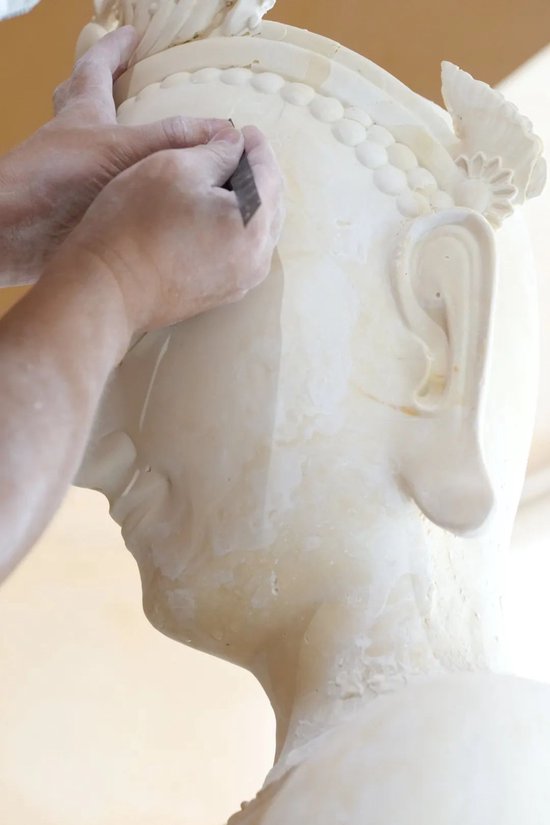

Over the course of the past decade, Jiang Sheng has visited numerous Buddhist sites where relics intertwined with local customs and created unique aesthetics。 Not only statues and temples, but even a stone or a footprint gain immeasurable significance over time。 With these explorations, he continually drew inspiration from behaviors and objects imbued with new meanings, transforming it into his own Buddhist statues and sharing his findings through exhibitions。
Buddhism is a type of religion that resonates deeply with people。 The statues, temples, and associated practices and objects created by people all ultimately point towards a path of liberation。 In Jiang Sheng‘s journals, we encounter these “statues” within diverse settings—some are solemnly seated in temples, while others intriguingly appear in everyday scenes, transcending the confines of religion。
Buddhist statues seem to exist in response to human, and such dependence also makes them more accessible, closer to life。 Jiang Sheng‘s journey to Pakistan in search of the origin of Buddhist art also provided him with insights into the concept of “human”。 Although he could not eliminate the thousand-year gap between his time and space and that of ancient Gandharan world, his sensory perception of the statues, space, and fields of Gandharan sites inspired his understanding of the saints。 Therein, he molded his contemplations into different forms with his hands。
Additionally, Jiang Sheng strives to eliminate the gap between the sanctity and the emotional resonance of faith in the exhibition。 Through daily objects, he extends the power of faith profoundly into the minutiae of life。

符号
Symbols
2018年,蒋晟前往敦煌,他深入洞窟,见识了富丽恢弘的藻井、纹饰。深入沙漠,见识了沙漠的自然纹理。以蒋晟的话说,便是“沙之阴阳,圆融无碍”。回到厦门后,蒋晟以沙为灵感、与见南花品牌合作,设计出第一款花砖。
去年,在巴基斯坦的拉合尔堡,蒋晟注意到拉合尔皇家浴室出水口的浮雕纹饰,水流缓缓流过纹饰,动态造型的改变,呈现出“软雕塑”状态。他以此为灵感,回国后继续与见南花合作,创作出一系列花砖浮雕作品。
在佛像还未被塑造之初,象征符号和纹饰扮演着至关重要的角色。信徒以花、佛脚印等等来表示敬意。纹饰不仅是装饰,更是组成佛教美术空间语素的部件。


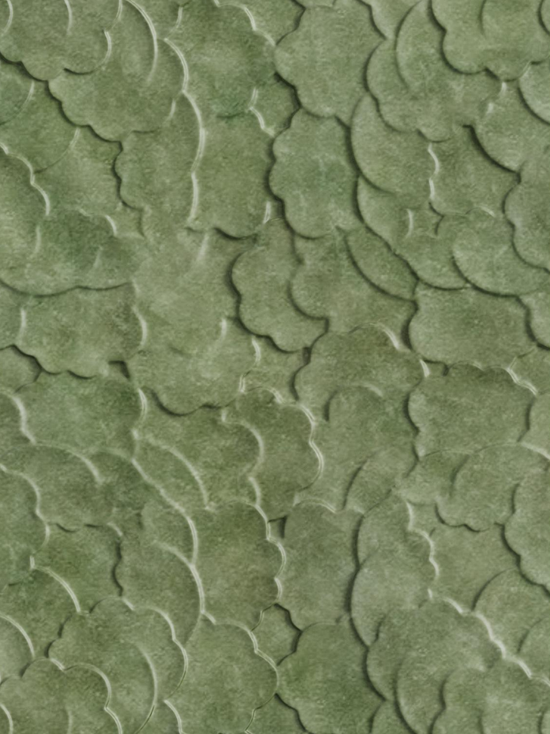


In 2018, Jiang Sheng visited Dunhuang, where he marveled at the splendid caisson ceilings and motifs of the caves。 The natural textures of the desert also left an impression on him。 He described it as “the Yin and Yang of sand, seamless and unimpeded。” After he returned to Xiamen, he collaborated with the local tile-making brand Nanchow and designed the first floral tiles。
Last year at the Lahore Fort of Pakistan, Jiang Sheng noticed the relief patterns on the water outlets of the Royal Bath。 The gentle cascade of the water over the decorations transformed the original shapes into a soft sculptural state。 Inspired by his observation, he continued his collaboration with NANCHOW to produce a series of floral relief tiles。
Symbols and motifs once played a critical role representing the Buddha before Buddhist statues were ever sculpted。 Devotees honored flowers, footprints, and other symbols to express reverence。 These motifs were not merely decorative, but integral components of Buddhist art vocabulary。

媒介
Medium
蒋晟如此定义‘物感’:“当手触摸到材料,才能‘雕’与‘塑’,物体进而显露出‘真实’的一面。手反复在材料上游动,材料在手里不停变化,造型和曲线逐渐被定义,这种感觉我称之为超越思维和逻辑的‘物感’。”
佛像的创作过程,其形象从模糊到清晰,循序经历了:感知物体的模糊美感、体认其实用性、直觉化的勾勒、通过时间沉淀再反观、继续修正,最终落实。整个过程像沙漏,其中一端漏完,再倒回去继续下漏,无始无终。
这些塑造借由‘物感’,将木、石、瓷、玉、漆、金等自然材料运用不同的手法和工具加工,将佛菩萨的慈悲与智慧借由自然之美彰显而出,正如日本平安时代的佛师说:“我只是比别人先一步从木材里看出佛的姿态,并照着我的想象雕刻、完成佛像。”削去削出,让木头里的佛像浮现,不是制作佛像,而是佛像早已在里面,只是让他浮现。这就是抉择的美。在生活中彰显自己的方法,就是有勇气削除生活杂物。”(自凝心平语)




Jiang Sheng defines “the sense of object” as follows: “Only when the hand touches the material can one ‘carve’ and ‘sculpt,’ revealing the ‘genuine’ side of the object。 The hand repeatedly moves over the material, which constantly changes in the hand, with shapes and curves gradually defined。 I call it ‘the sense of object’, transcending the physical beings。”
The creation of Buddhist statues is a process from ambiguity to clarity: perceiving the vague beauty of the material, understanding its practicality, sketching intuitively, reflecting and revising over time, and finally completing the form。 The process is cyclical, much like a perpetuating turned-over hourglass, without beginning nor end。
Through materiality, natural materials, such as wood, stone, porcelain, jade, lacquer, and gold, are processed with different techniques and tools。 The compassion and wisdom of Buddhas and Bodhisattvas are expressed through the natural beauty of these materials。 As a Japanese sculptor from the Heian period once said, “I am simply the first to see the Buddha’s figure in the wood and carve it according to my imagination。” Carving out the figure within the wood is not about creating a statue。 Instead, it is about revealing the Buddha image already present inside。 That is the beauty of discernment。 “Expressing oneself in life involves the courage to carve away the clutter of existence。” (Quotes from Onokoro Shimpei)
关于蒋晟
About Jiang Sheng

艺术家、雕塑工作者。1990出生于中国福建厦门美术世家,2013年创立‘蒋家班’工作室,致力于东方雕塑形象及工艺的探索与实践。
蒋晟遵循多元化的塑造方式‘为佛造像’。结合他对于古典美学的诠释,‘给佛一个人间的身体’,这一理念贯穿在他的佛像作品中。蒋晟的作品致力于打破宗教的语境与造像符号化的模式,使观者感受到一种平等的力量,用无国界的现代雕塑语言传递信念与力量。
作为艺术家,蒋晟的作品曾在世界不同风貌的地域展出或永久陈列,诸如艺术中心、寺庙、历史建筑、弄堂、剧院、山谷等。日常工作中,蒋晟也曾受多家寺院委托创作及督造佛像。在他眼里,任何空间结合自然力量,皆可构成宗教及美学的场域。
Artist & sculptor。 Born in 1990 into a family of fine arts in Xiamen, China, Jiang Sheng is an artist focusing on leading the trend of modern Buddhist sculptures in China。 In 2013, he founded THE JIANGS, an artist’s studio which dedicates to the research and presentation of oriental sculptures with a focus on Buddhist art。
Jiang has followed the diversified Han-style manners of sculpture-making。 Combining diversified Han-style sculpturing methods to modern aesthetics, Jiang always endeavors to give the Buddha a form on the earth。 His works break through the conventional religious context and symbolic pattern, embracing beholders with a sense of equal power。
As an artist, Jiang Sheng‘s works have been exhibited or permanently displayed in various landscapes around the world, such as art centers, temples, historical buildings, alleys, theaters, valleys, etc。 In his eyes, any space combined with the power of nature can constitute a religious and aesthetic field。 In his daily work, Jiang Sheng has also been commissioned by monasteries to create and supervise the construction of Buddhist statues。
支持机构单位
Supporting Institutions
主办方 ORGANIZER
TCCA红顶当代艺术中心 TOPRED CENTER FOR CONTEMPORARY ART
蒋家班 THE JIANGS
出品人 PRODUCER
陈丹妮 Chen Danni
策展团队 CURATORIAL
蒋家班 THE JIANGS
照明设计 LIGHTING DESIGN
驭韶照明 DLX Lighting Design
空间设计 SPACE DESIGN
李白 Order Studio
视觉设计 VISUAL DESIGN
姜慎微 IN THE MICRO Design Studio
展陈设计 EXHIBITION DESIGN
蒋家班 THE JIANGS
展览团队 EXHIBITION TEAM
申晨 方思梦 唐文 黄维 石祥甫 邵梓杰
Shen Chen, Fang Simeng, Tang Wen, Huang Wei, Shi Xiangfu, Shao Zijie
余佳文 虞箴 陈熙 吴兆宁 张觉聪 王雅儒 黄灵珠 兰桥连
Yu Jiawen, Yu Zhen, Chen Xi, Wu Zhaoning, Zhang Juecong, Wang Yaru, Huang Lingzhu, Lan Qiao Lian
空间摄影 SPACE PHOTOGRAPH
雷坛坛 Jonathan Leijonhufvud
佛像摄影 PHOTOGRAPHY OF BUDDHA STATUE
许晓东 Xu Xiaodong
开幕音乐 OPENING MUSIC
尹引 Yin Yin
品牌合作 BRAND COOPERATION
见南花 末那 Ian Hylton Okra MOOD‘S FLORAL
NANCHOW, MANA‘S, Ian Hylton, Okra, MOOD’S FLORAL
前言 PREFACE
王般若 陆卓 Wang Banruo, Lu Zhuo
学术支持 ACADEMIC SUPPORT
拉合尔教育大学 University of Education, Lahore
中巴文化教育中心 China Pakistan Educational Cultural Exchanging Institute
斯瓦特博物馆 Swat Museum
白沙瓦大学博物馆 SSAQ Museum of Archaeology and Ethnology University of Peshawar
开伯尔巴图赫瓦省政府考古与博物馆管理局
Archaeology & Museum Government of Khyber Pakhtunkhwa Pakistan
丝路文化中心Silk Road Culture Center, Islamabad


推荐阅读
RECOMMEND







来源:TCCA红顶当代艺术中心


